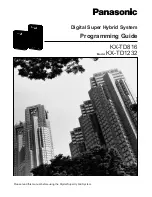
//
Ex RC …
st
eut
e T
echnol
ogies GmbH & Co. K
G
Brück
ens
tr
aße 91, 32584 Löhne, Germany
, www
.s
teut
e.c
om
3 /16
Montage- und Anschlussanleitung / Magnetsensor
Mounting and wiring instructions / Magnetic sensor
Instructions de montage et de câblage / Capteur magnétique
Istruzioni di montaggio e collegamento / Sensore magnetico
Instruções de montagem e instalação / Sensor magnético
Инструкция по монтажу и подключению / Магнитный датчик
English
Français
Utilisation des instructions de montage et de câblage
Groupe cible: personnel autorisé et compétent.
Toutes les manipulations décrites dans cette notice d‘installation ne
doivent être effectuées que par du personnel formé et autorisé par la
société exploitante.
1. Lire et comprendre les instructions de montage et de câblage.
2. Respecter les règles de sécurité et de prévention des accidents en
vigueur.
3. Installer l’appareil et le mettre en service.
La sélection et l'installation des appareils et leurs intégrations dans
les systèmes de commande exigent une connaissance approfondie
de toutes les lois pertinentes, ainsi que des exigences normatives du
fabricant de la machine.
En cas de doute, la version allemande fait référence.
Cleaning
- Use a damp cloth to clean devices in explosive areas. This prevents
electrostatic charge.
- In case of damp cleaning: use water or mild, non-scratching,
non-chafing cleaners.
- Do not use aggressive cleaners or solvents.
Disposal
- Observe national, local and legal regulations concerning disposal.
- Recycle each material separately.
Maintenance, service and repair
=
DANGER
Live parts.
Electric shock hazard!
Do not repair de-
fective or damaged devices. Replace them.
=
DANGER
Explosive atmosphere.
Risk of burns!
Do not re-
build or modify the device in any way.
With rough conditions, we recommend routine maintenance as follows:
1. Remove all dirt or particles.
2. Check sealing of the cable or conduit connections.
3. Check for damage.
N.B.
Furthermore, EN 60079-14 has to be applied for the installation of
electrical equipment in explosive areas. Moreover, the ATEX test certif-
icate and the special conditions therein have to be observed. It is the
responsibility of the manufacturer of a plant or machine to guarantee
the correct general function. Subject to technical modifications.
ments of EN 60079-14, e.g. with regard to dust deposits and tempera-
ture limits.
Special conditions and »X« marking
- Lay the connection cable securely to protect it from
mechanical damage.
- If the connection is carried out within an explosive environment, con-
nect the cable inside an enclosure which meets the requirements of
an approved ignition protection type per EN 60079-0.
- Install the magnetic sensor Ex RC 12 and magnetic sensor with a
»4J« marking in such a way as to protect them from
mechanical damage.
- The maximum short circuit current I
k
of the supply source may not
exceed the I
k
value given on the product label.
Installation, mounting and dismantling
=
DANGER
Live parts. Explosive atmosphere.
Explosion haz-
ard! Risk of burns!
Connecting and disconnecting
only to be performed by qualified and authorised
personnel. Connecting and disconnecting only in
non-explosive environment.
The mounting distance between two magnetic sensors must be
min. 50 mm. Keep away ferromagnetic cuttings, do not mount in
strong magnetic fields and on ferromagnetic materials. If necessary,
mount 20 mm of non-ferromagnetic material around the magnetic
sensor. Mount magnetic sensor and actuating magnet so that they
centrically align with each other. Do not fix with ferromagnetic mount-
ing material. Do not use the device as a mechanical endstop. Any
mounting position is possible.
Depending on the electrical load, the
magnetic sensor must be protected from voltage and current peaks
by suitable protection circuits. It is required to distinguish between
ohmic, inductive and capacitive load.
To avoid electrostatic charging and electric shock hazard: use the pro-
tective conductor (gn/ye wire) provided on the device. Alternatively:
conntect the device to the equipotential bonding (earthing) via the fas-
tening or the external protective conductor connection provided on
the enclosure.
Application and operation
=
DANGER
In case of overloaded contacts too high operation
temperatures.
Explosion hazard! Risk of burns!
For
short-circuit protection use appropriate fuse size.
- Use device only within the permitted electrical load limits (see
technical data).
- Use device only within the permitted ambient temperature range
(see product label and technical data).


































